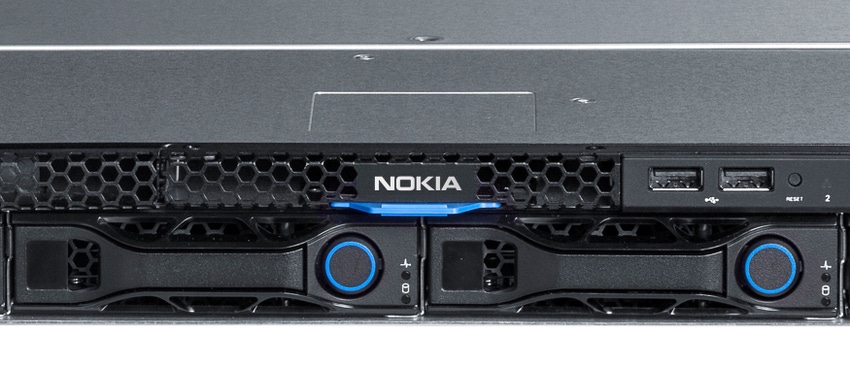Nokia Networks has unveiled a major new strategic direction by launching a range of Hardware datacenter solutions designed to facilitate a distributed telco cloud model.
June 1, 2015

Nokia Networks has unveiled a major new strategic direction by launching a family of hardware datacenter solutions designed to facilitate a distributed telco cloud model.
The products are branded Nokia AirFrame Data Center and mark a significant move into server hardware for the Finnish company. Apart from supporting the broader industry trend of moving the functions and management of networks into the cloud (NFV, SDN, etc), the rationale behind the move is based on the perceived need to have at least some of these cloud resources physically closer to the edge of the network.
It is also asserts that telcos have some specific requirements of their cloud that are better provided by vertically aligned vendors such as Nokia than datacenter generalists. The core product is a server unit that can either be slotted into a pre-existing rack or supplied as part of a preintegrated Nokia rack. It uses Intel CPUs and is designed to be a ‘plug-and-play’ replacement for standard IT kit and to be as easy as possible for operators to combine with any other cloud resources they already have.
Phil Twist, VP of Portfolio Marketing at Nokia Networks explained the thinking behind the move to Telecoms.com. “The way that networks are now being built means you have these big datacenters hosting all of your core network applications and you end up with a fairly inefficient way of doing it, in which every bit of data that comes from your mobile phone has to be transported across the network to this datacenter and then transported back out again,” he said.
“Data traffic continues to grow rapidly so it’s not sensible to transport every bit of data everywhere across the network and back again. And as we move into the IoT and 5G world, the time it takes to transport this data doesn’t play in to the millisecond latencies that we need.
“So our proposition is that we’re moving towards a mixture of distributed and centralized. So some of the network functions that you might use once per call – call setup or whatever – can be in a central datacenter, but all of the other time-critical stuff would be far better suited if you push it out to the edge of the network. So you end up with a mix of distributed small datacenters and larger central ones as our model of how networks will evolve going forward.
“What we are launching, as AirFrame, is our proposition to build networks. We are launching our own data servers and switches to make this work, so it’s us moving from software-only virtual network functions to building the hardware and clouds for operators too. We’ve built operator grade security onto the server cards and we’ve ensured that in future they can do things like the radio signal processing, which they are five times more effective at than a standard IT server.”
Sandra Rivera, GM of the Network Platforms Group at Intel, said: “We’re pleased to support Nokia Networks on its path to provide a data center solution that fulfills the most demanding requirements of the telco cloud environment. We believe that combining Intel’s leading processors and virtualization technologies with Nokia Networks’ deep knowledge of the telecommunications market will accelerate adoption for cloud technologies deployed by leading operators worldwide.”
Nokia is 150 years old this year and has reinvented itself more often than Roger from American Dad. Most recently it exited the mobile handset market it once dominated when it became clear that IT companies had a competitive advantage over mobile specialists in the smartphone era. This move into server kit is another strategic realignment for Nokia and possibly marks a move by all telco vendors to reclaim some of the ground they’re in danger of losing to the IT world as networks shift to the cloud.

About the Author(s)
You May Also Like








.png?width=300&auto=webp&quality=80&disable=upscale)


_1.jpg?width=300&auto=webp&quality=80&disable=upscale)


.png?width=800&auto=webp&quality=80&disable=upscale)